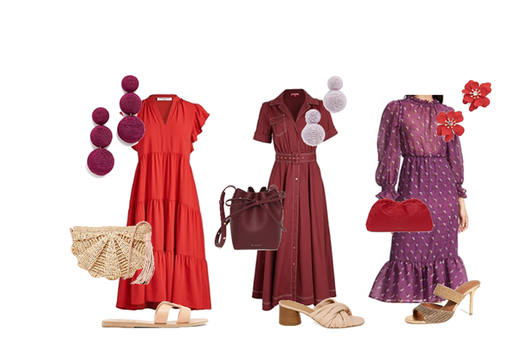After reading this article and seeing my illustrations, you now have a clear answer the next time someone asks what color purple and red make — and you also now know how to make magenta! (If you want to know how to create maroon color, check out “What does red and black make?”)
What Color Does Red and Purple Make?
Curious to learn the answer to the question, “What color does red and purple make?” Let us continue our color mixing chart explorations!
As background, I’m an artist and teacher who was 40 years old before I began realizing how little I knew about color pigmentations — and now I can’t stop mixing — as explained in my article, “Is Pink a Warm Color?” Every experiment is an adventure!
Let’s start with seeing what purple and red look like, only partially swirled together. Ooh, that’s gorgeous…
Mixing the Colors
As you can see above, purple and red are analogous colors, meaning they are next to each other on a color wheel. Red is a primary color, and purple is made up of blue and red — so when they’re mixed, they create a pleasing, clear, harmonious tertiary color, also known as intermediate colors.
Other tertiary intermediate color mixes made from analogous combinations you may know are what blue and green make when mixed: teal, what red and orange make: vermillion, what blue and purple make: violet, what yellow and orange make: amber, and what green and yellow make: chartreuse!)
In contrast, adding together colors on opposite ends of the color wheel (such as mixing red and green, or combining yellow and purple) yields muddy shades like brown or even black.
Now, what is the exact color called when purple and red come together? We know red and blue make purple, but what about red and that secondary color? Let’s see my illustration below, created with the digital art app called Procreate.
How to Make Magenta
What colors make magenta? Why, it turns out that when you mix purple and red, that’s exactly what you get! What precisely is magenta? In my opinion, it’s one of the most fabulous hues out there: a rich reddish-purple that’s integral to the “Jewel Tone” palette that I love so much. I use it all over my colorful clothing designs, and cartoon art in general.
The name may ring a bell from new stories, because the 2023 Pantone color of the year is “Viva Magenta.” Incidentally, the answer to: “Pink and purple make what color?” is also magenta… just a lighter one. If you use a more brownish purple like plum, you’ll get more of a burgundy, merlot, or wine color, since the answer to to red and brown make what color is maroon.
Now, what’s the difference between magenta and fuchsia? Magenta has more red in it, as you can see from these drawings, while fuchsia (not spelled “fushia“) is more like a purplish hot pink color. I like them both, but have a slight preference for the former, because it feels “meatier” to me — more robust.
(Side note: You’ll see I’m using the spelling “color,” but if you’re wondering about the difference between color or colour, click that link to learn the surprising back-story and English rule. For more on the meaning of the color, check on my piece about what a magenta aura signifies.)
How to match colors: Red and Violet
Here it is: another post part of the color combination series!
Like any other neighboring colors in the color wheel, red and violet look amazing together.
This combination sends a message of approachability and casualty that is easily translated to any personal style or occasion.
Need some proof? Just check out the outfit options here:





This duo is called analogous and can actually include up to three or four neighbors in the color wheel, such as red, red violet, violet and blue violet.

Remember that when we consider a color combination for our outfits, it should also include accessories, such as jewelry, bags, shoes and even the nail polish you pick! So you don’t need to wear red pants and a purple t-shirt to achieve this perfect color combination.
Always remember that when we talk about color combinations, we consider each color in any value (dark x light), temperature or intensity.
It means that there are many shades of red and purple to choose from, and the combination is still called analogous. For example, burgundy is a dark red, and lavender is a light purple.
SOME SPECIAL TIPS FOR YOU
As I always say, there are colors that enhance our natural beauty and they are always the best to be worn close to our face – in tops, scarves, necklaces, earrings, sunglasses etc.
Now, what happens if a color washes us out or it’s too heavy for our complexion?
If it’s still part of your personal style and you really want to wear it, my advice is simple: go for it! But do make sure to wear the right makeup palette and don’t forget to choose strategically the accessories’ colors.
I promise you that it will completely change how you look!
Interested in finding out what color palette best fits you? Get in touch with me to learn more about this service: [email protected]





